Family: Liliaceae Juss.
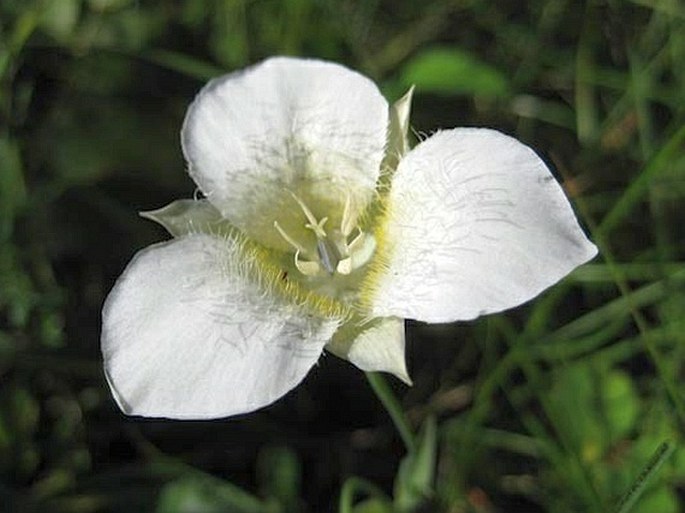
Distribution: Northamerican species. Found in relatively small area in southeast of British Columbia, southwest of Alberta, east of Washington, north of Idaho and west of Montana.
Ecology: Grows in dry and semi-wet meadows, grassy slopes, woodlands, at elevations from 400 to 2130 m.
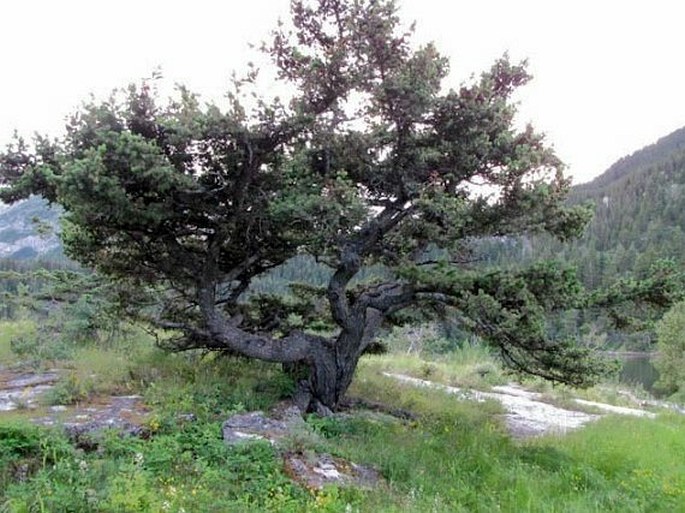
Description: Perennial herb with underground bulb. The stem is straight, 10–30 cm tall, unbranched, often with bulblets in axils of leaves. Basal leaf is single, flat, grass-like, 10–30 cm long and 5–15 mm wide, shorter than stem; stem leaves are linear, flat and smaller. Umbel-like 1–5 flowers are stalked, 3–4 cm across, 3 broad petals are abruptly pointed at the tip, yellowish-white, hairy at base, or fringed along edges, with a purplish dot (gland) at base; sepals green, shorter than petals. Fruit is a nodding, elliptical, 3-wing capsule, about 2.5–3 cm long.
Notes: The bulbs of mariposa-lilies are sweet, nutritious, raw or cooked. They were eaten by many tribes and were widely distributed by settlers in Utah when food was scarce.
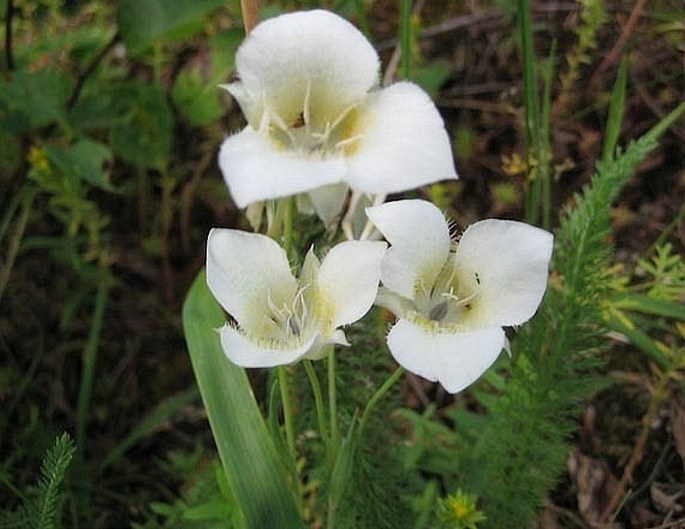
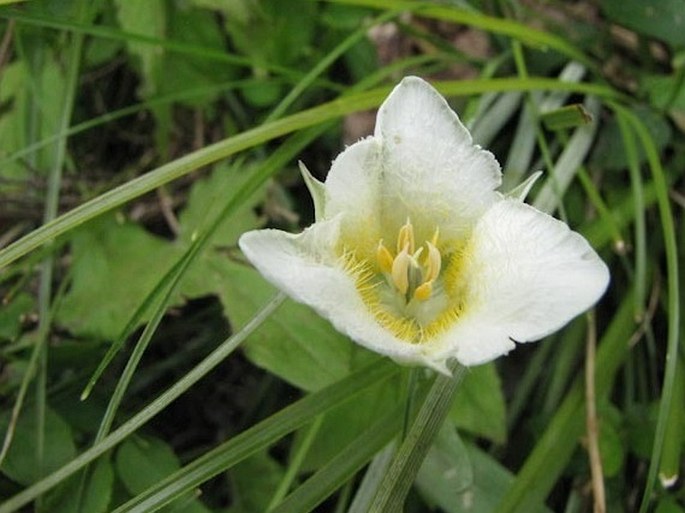
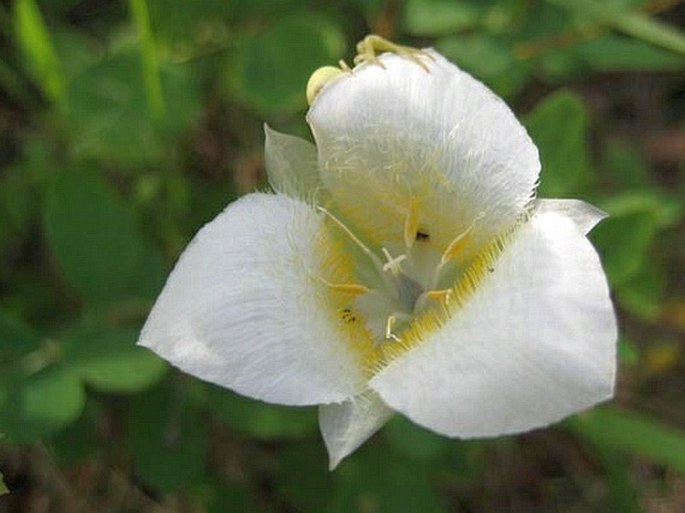
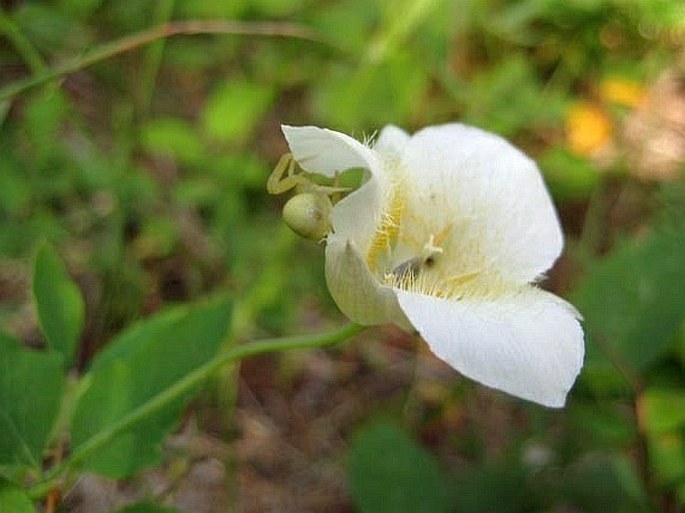
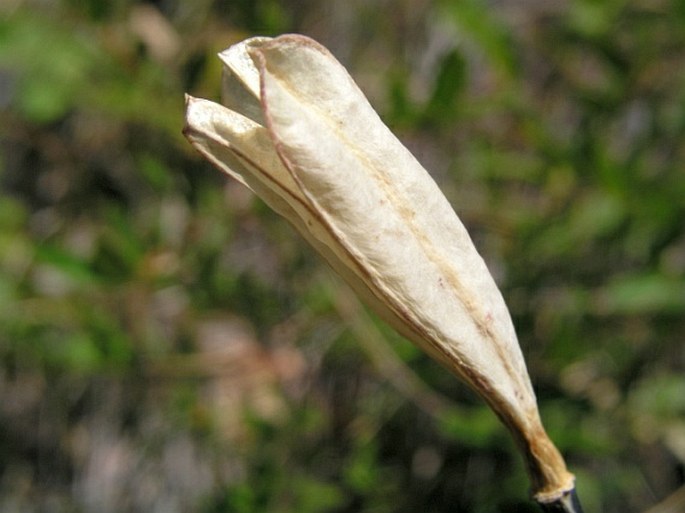
These images were taken in Canada, Alberta, Waterton Lakes National Park (by Karel Bergmann, July 2013, and by Vít Grulich, July 29, 2007).


